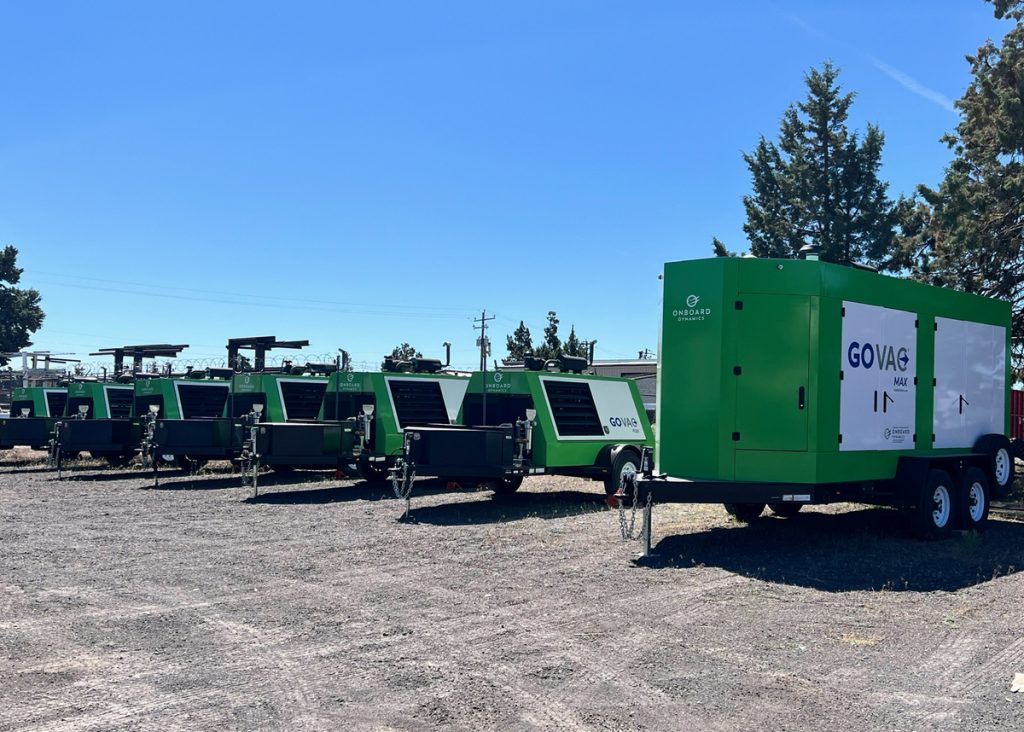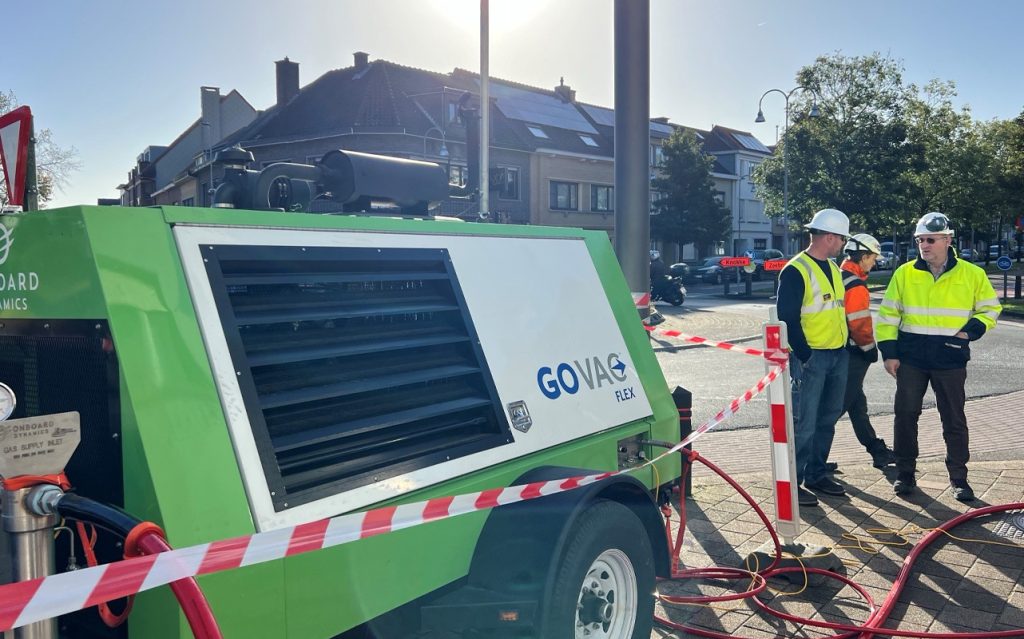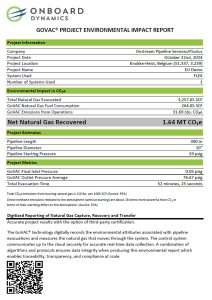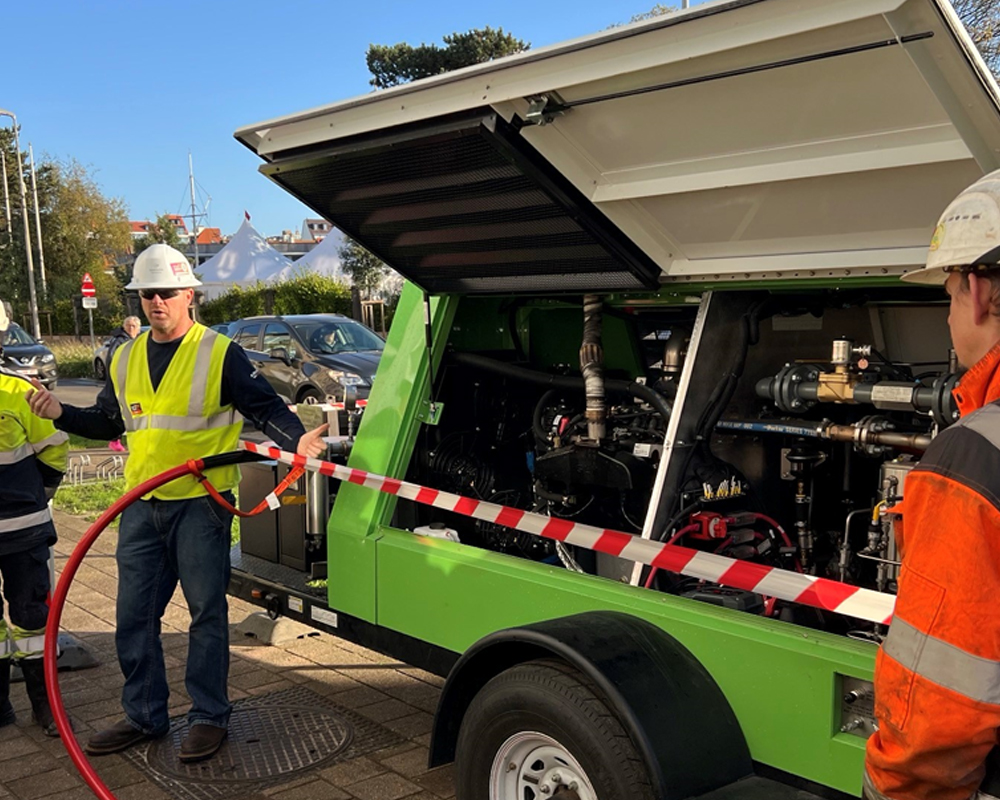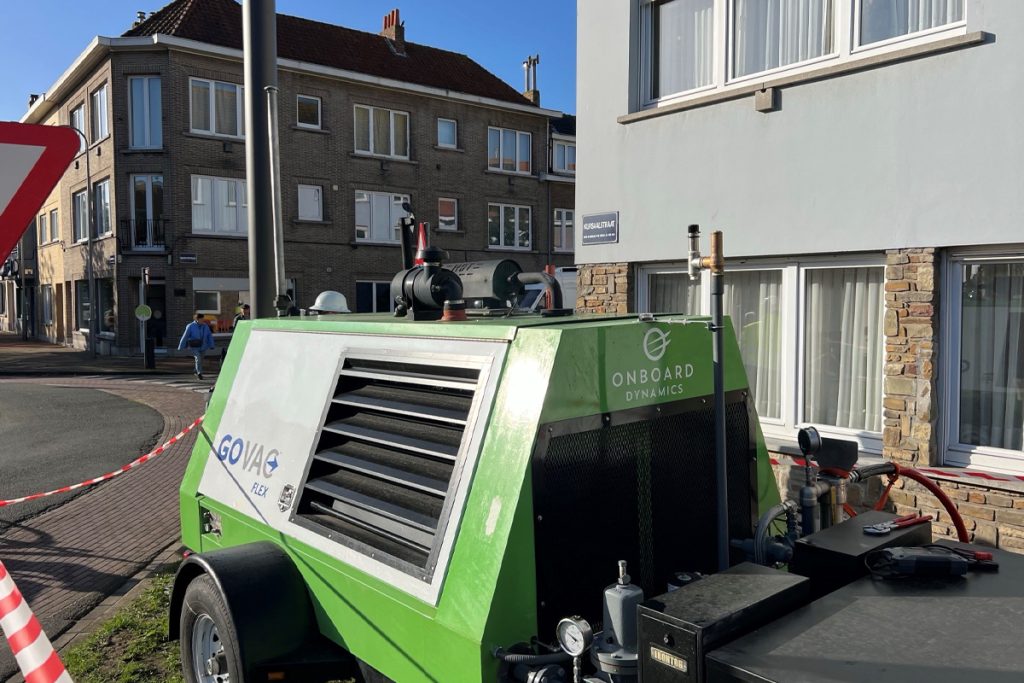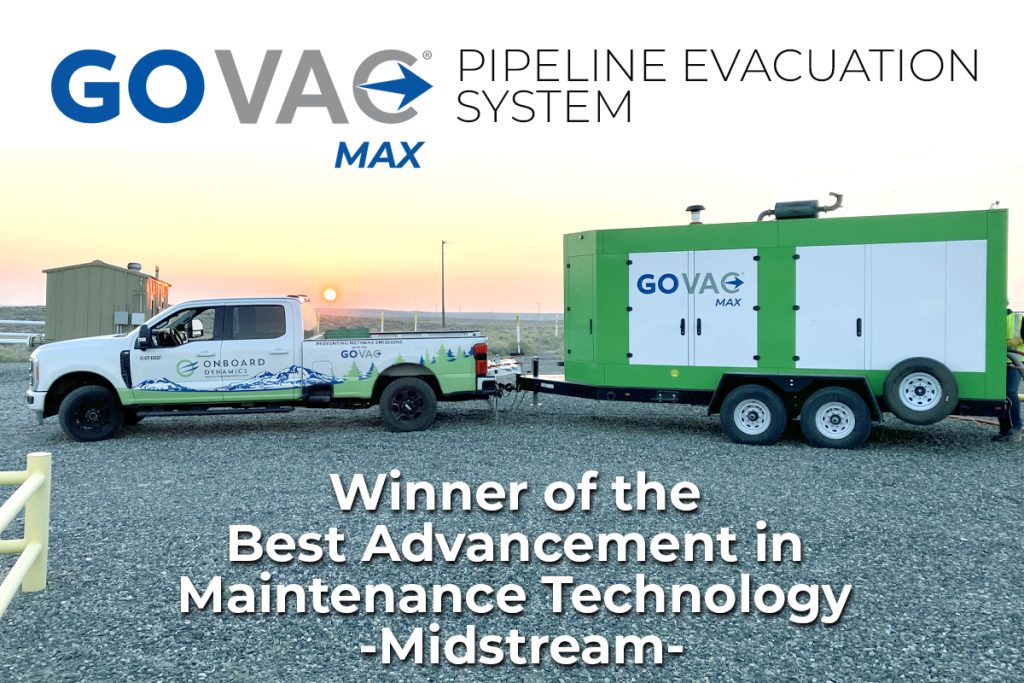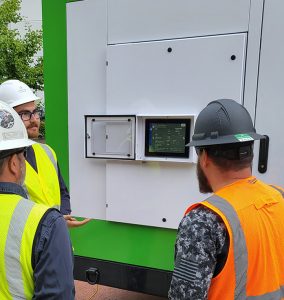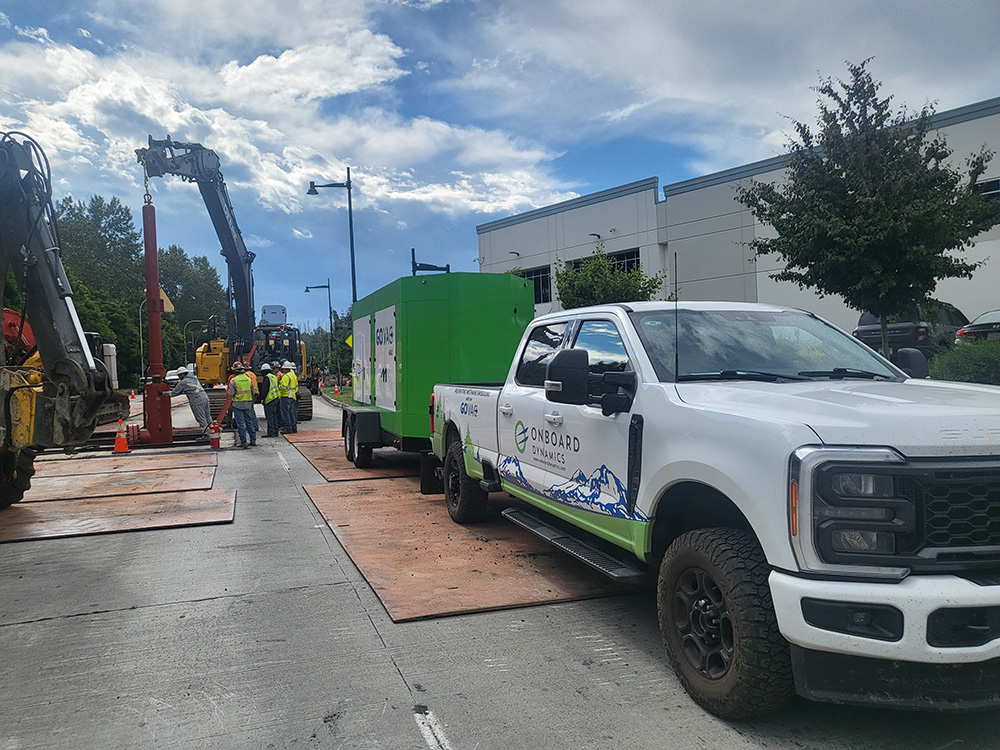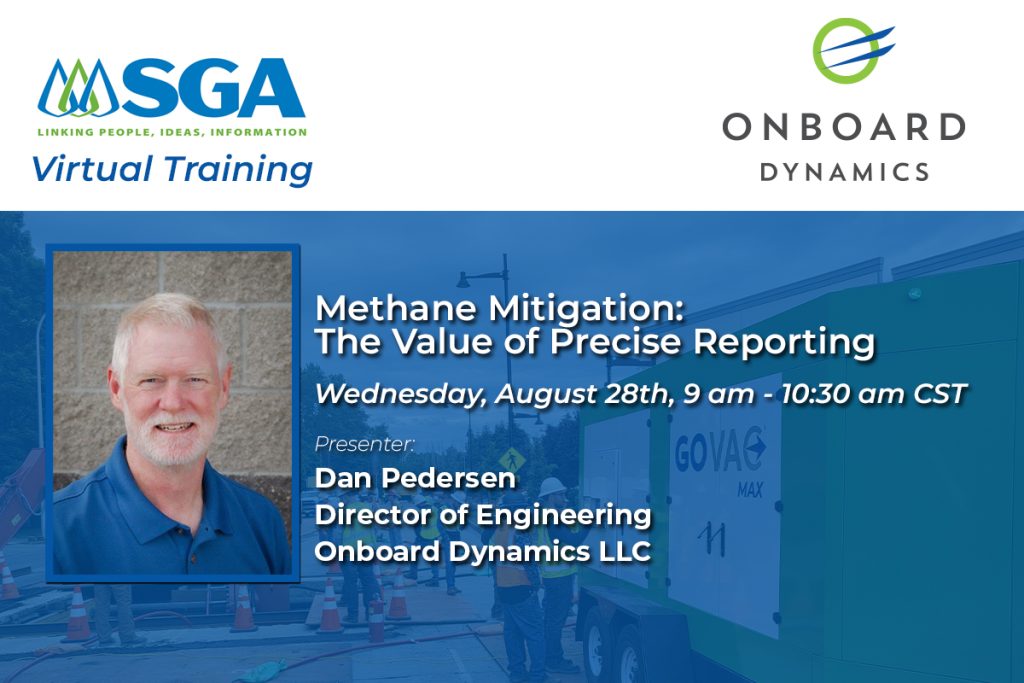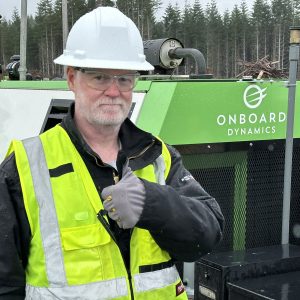Challenge
Faced with the need to perform scheduled integrity digs on a 26,400-foot section of 12-inch pipeline, a leading U.S. natural gas utility took a forward-thinking approach to environmental responsibility. The utility sought a solution that aligned with its commitment to sustainability, safety, and operational excellence. Their goal: to recover natural gas efficiently while minimizing environmental impact and ensuring regulatory compliance.
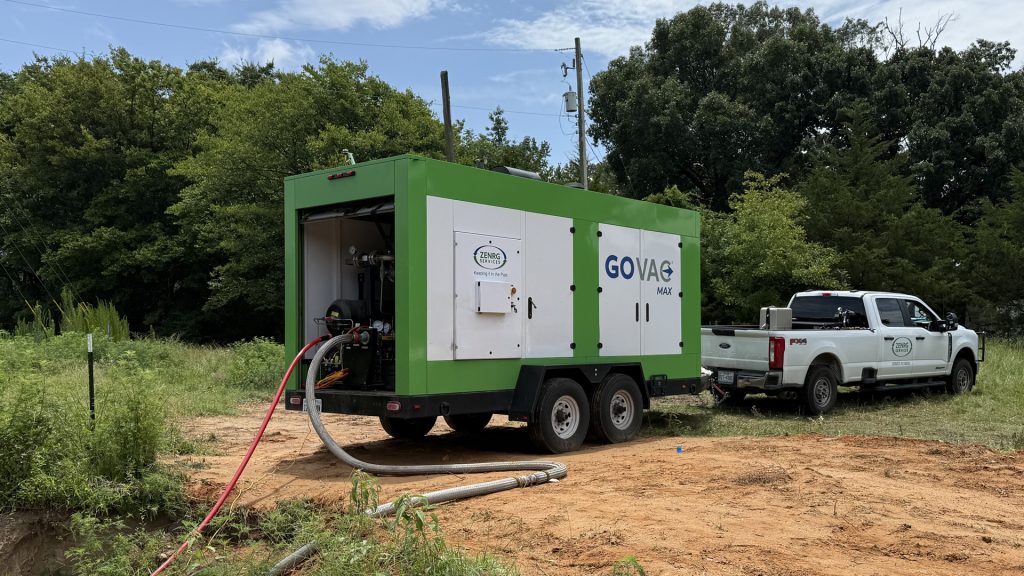
Solution
ZENRG Services, an authorized service provider for Onboard Dynamics, deployed two GoVAC® MAX Systems to perform the evacuation. The systems successfully cross-compressed the natural gas in under seven hours, eliminating methane emissions during the process. Integrated automated data capture enabled remote monitoring and delivered accurate, real-time operational reporting—ensuring transparency, traceability, and compliance throughout the project.
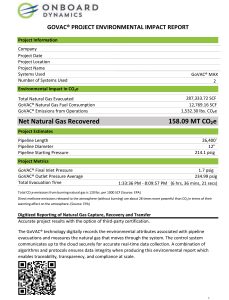
Key Metrics
- Total Natural Gas Evacuated: 287,333.72 SCF
- Net Natural Gas Recovered: 274,564.56 SCF
- Environmental Impact Avoided: 158.09 MT CO₂e
- Pipeline Specs: 12″ diameter, 26,400′ length
- Pressure Range: 234.99 psig (start) → 1.7 psig (final inlet)
- Evacuation Duration: Under 7 hours
Benefits
- Safety: Mitigate risk to personnel
- Environmental Compliance: Avoided significant methane emissions aligning with company emission goals.
- Operational Efficiency: Completed evacuation in under 7 hours with minimal gas loss.
- Data Transparency: Digitally recorded and cloud-synced metrics for third-party certification and audit readiness.
- Product Savings: $906
“The GoVAC® MAX System has completely transformed how we approach natural gas evacuation projects. Its ease of deployment, rapid performance, and automated data capture make it one of the most efficient and reliable tools in our field operations. It allows our teams to deliver exceptional results while staying aligned with our environmental and safety commitments.”
— Joe Chandler, CEO, ZENRG Services
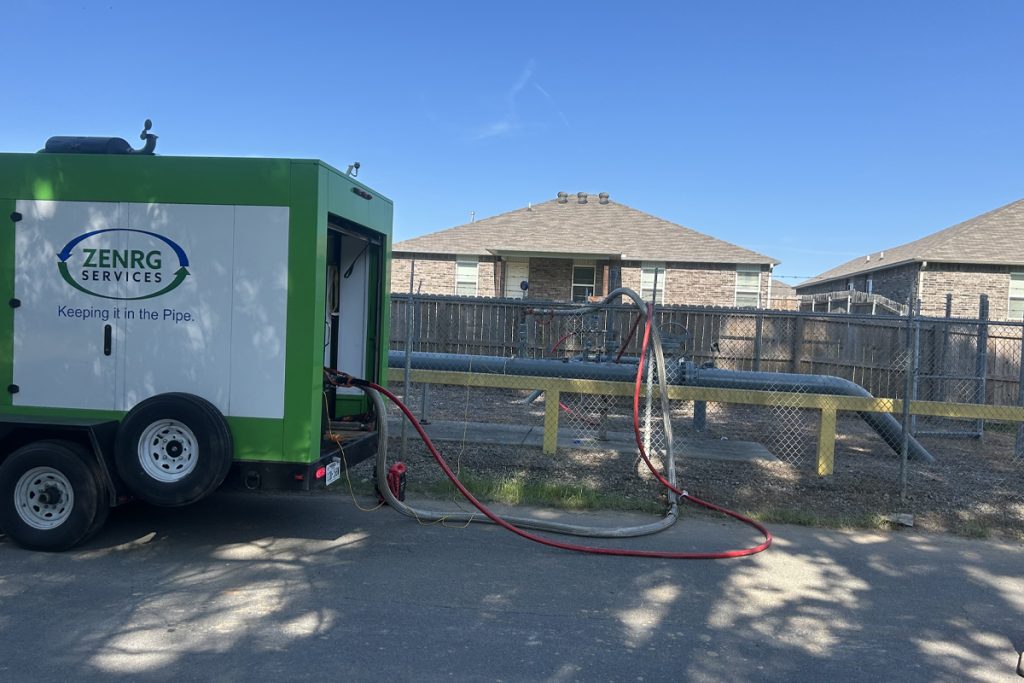
The successful deployment of the GoVAC® MAX System in the Southern US project demonstrates the powerful intersection of innovation, environmental stewardship, and operational efficiency. By capturing and recovering over 274,000 SCF of natural gas and avoiding more than 158 metric tons of CO₂e emissions, this project exemplifies how advanced evacuation technology can transform routine pipeline maintenance into a model of sustainability and accountability. The GoVAC® System not only supports regulatory compliance and ESG goals but also delivers measurable value through data-driven performance and reduced environmental impact—setting a new standard for responsible energy infrastructure management.

